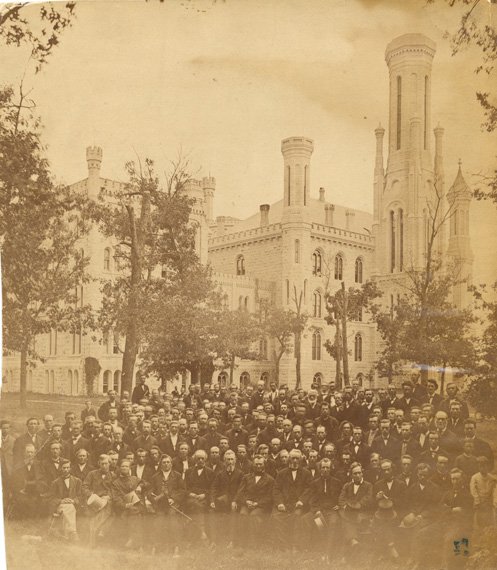The Truth and Controversy
President Galusha Anderson's rosy account (Myth of Openness section) of a university continually open to women and African Americans obscures a more complicated story.
The institution now known as the Old University of Chicago was originally incorporated as the University of Chicago in 1857 on a ten-acre tract of land donated by Illinois Senator Stephen A. Douglas. Douglas' connection with the Kansas-Nebraska Act, regarded as a betrayal of the anti-slavery cause, was a source of great controversy for the new institution.
In 1867 Thomas Hoyne, prominent Chicago lawyer and future mayor-elect, told the story thus:
At the time that offer [of land] was made, Judge Douglas had excited throughout the country a great deal of popular clamor and opposition, on account specially of his agency in the passage of the Nebraska Bill. To use his own language-he could travel by the light of his own burning effigies from Washington to Chicago. Certain portions of the clergy drifting into the political hurricane against Douglas, convened a meeting long known as the "meeting of the twenty-five clergymen in Chicago," to denounce the author of the Nebraska iniquity. Among the number called together happened to be one Baptist, the then pastor of the First Church in Chicago. Inheriting, very naturally, that hatred of intolerance that gave courage to the ancient colonial disciple of your church-Roger Williams-when driven out of Massachusetts Bay to Rhode Island, . . . he suggested to the reverend gentlemen that it might be the "right divine" of Douglas to interpret the oracles of the Constitution, and that it was no less sacred than the right claimed by them of so interpreting the oracles of the Word of god. The argument did not prevail but the courage and spirit of the protestant were never forgotten.
The dissenting Baptist, pastor of the First Baptist Church in Chicago, who rose to Douglas' defense was J.C. Burroughs. Burroughs became the first and longest-serving president of the Old University of Chicago.


